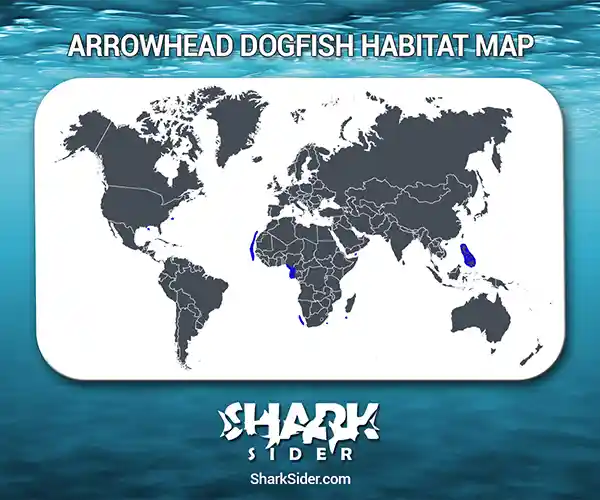The Arrowhead dogfish is a little studied deep water shark. It has a wide range and is one of the smallest members of its genus.
Arrowhead Dogfish Scientific Classification |
|
| Kingdom | Animalia |
| Phylum | Chordata |
| Class | Chondrichthyes |
| Order | Squaliformes |
| Family | Centrophoridae |
| Genus | Deania |
| Scientific name | D. profundorum |
Description
It is one of the smallest sharks in its genus, with adult males measuring 43-67 cm (17-26 in). The mature females are about 70-76 cm (27.5-30 in) long.
It is dark gray or grayish-brown, with an extremely long snout over half the length of its head. Its eyes are massive and closer to the snout than the gill slits.It has pitchfork-shaped dermal denticles. There are different types of teeth in their upper and lower jaws. The teeth in the lower jaw are broader, larger, and point sideways. Those in the upper jaw are smaller, narrow, and very sharp.
The first dorsal fin is short and high, and the second dorsal fin is taller and has a higher spine. There is no anal fin present, and it is the only species in its genus to have a subcaudal keel attached to the caudal peduncle.
Where do they live
Map Of The Arrowhead Dogfish Shark’s Habitat

Arrowhead dogfish have a widespread habitat. They can be found in the Pacific Ocean near the Philippines, from the Sahara to South Africa in the Indo-west Pacific, and in the Gulf of Mexico and the Caribbean in the Western Atlantic Ocean.
They usually inhabit deeper waters at depths from 275-1785 m (902-5856 ft). They are found on, or near the bottom of, upper continental or insular slopes.
Behavior
Dietary
They have a diet of bottom-dwelling bony fishes, squid, and crustaceans.
Reproductive
Arrowhead dogfish follow an ovoviviparous mode of reproduction and have 5-7 pups per litter. The size of newborns is around 31 cm (1 foot).
Social
They are known to congregate in vast schools on the open ocean.
Adaptations
Arrowhead dogfish share many evolutionary traits with other sharks, such as a keen sense of smell and eyesight, smooth, streamlined body, and sharp pointed teeth.
Human interactions
They are harmless to humans, have no commercial interest, and are only caught as bycatch. The IUCN has listed this species as “Least Concern” or “LC.”
